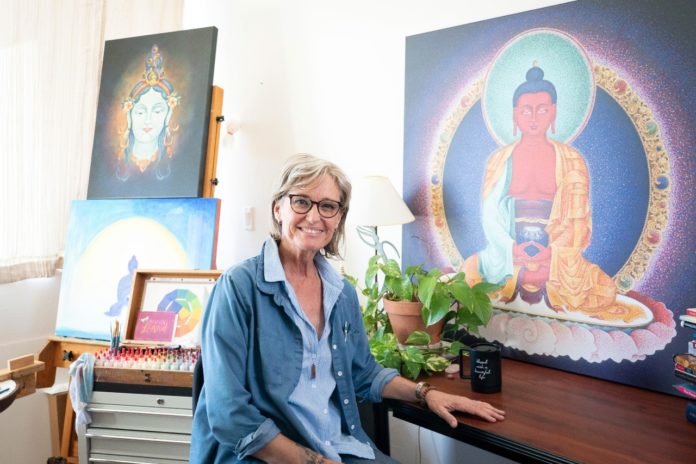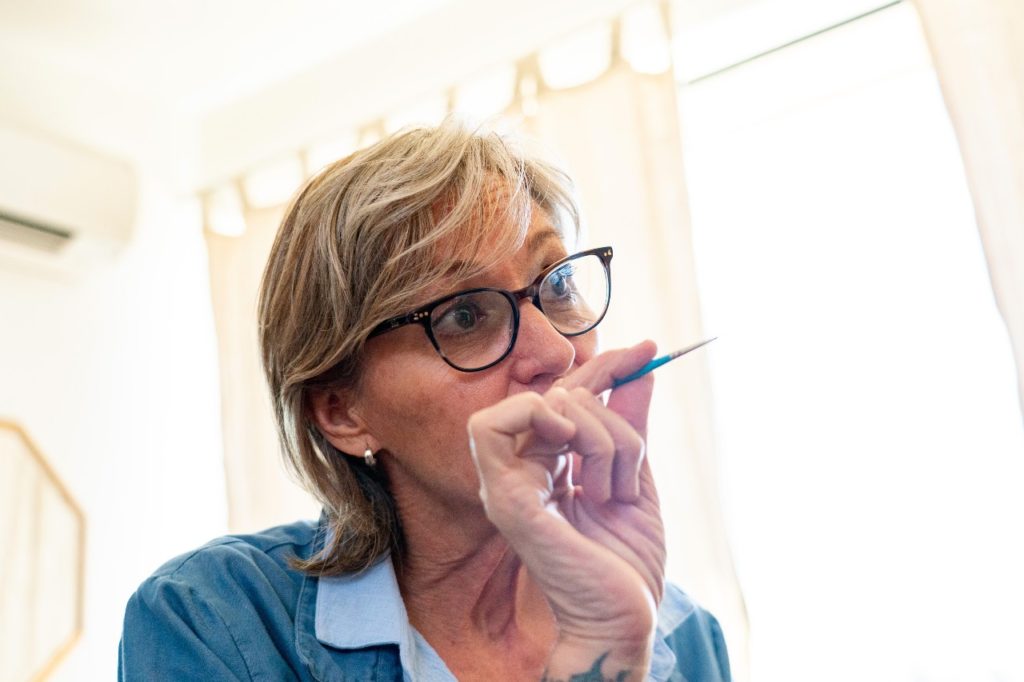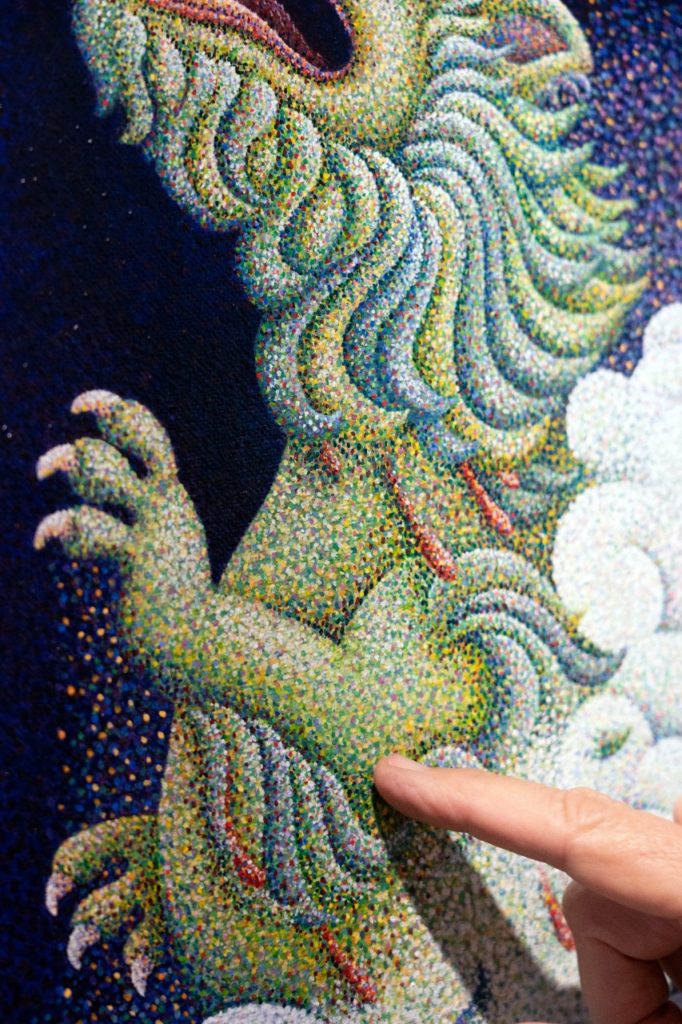
Thousands of tiny dots blanket a canvas. Each dot represents a moment in time, has a purpose and when combined with other dots creates an image bursting with color. These images are reflected in the artistry of Sherab Khandro.
Khandro’s paintings come alive with purpose, exposing layers beyond the veil and revealing subliminal messages of ancient wisdom. These paintings reflect an artists’ journey through life — a life of pain, suffering, awakening and joy — a life that parallels the Four Nobel Truths of Tibetan Buddhism.
At the age of 30, Khandro committed to living a life as a nun in the Kunzang Palyul Choling Tibetan Monastery in Poolesville, M.D., where she traded in her fashionable designer wardrobe for a traditional burgundy robe, belt and gold top.
“In so many ways the older nuns raised me. I came in with the emotional intelligence of a 12-year-old, and I had not gotten over all of the things that were influencing my perspectives,” she said.
Khandro was referring to a life of emotional pain, suffering and addiction. She grew up as a troubled youth, found solace in drugs and alcohol and craved love and attention from her emotionally absent father.
“I had a challenging life as a teenager, just as many children who feel that they are not being seen or heard and not understanding how this world works. It’s probably why I am so intrigued to figure this out,” she said.
The word “Sherab” refers to the “perfection of wisdom” and “Khandro” in Tibetan literally means “sky dweller” or “sky dancer.” This sacred name was bestowed upon her as she took the Bodhisattva vow.
“I was given a spiritual and aspirational name that would embody the qualities that I was seeking to live my life,” she said.

Khandro says that her life changed drastically after becoming a nun, but she found her heart and the artist inside. Exploring her inner artist, a talent that was suppressed for many years started to come out.
“I got to build and make things, right out of the gate. The first thing she [her spiritual teacher] said to me when I got ordained — ‘go and make things,’” Khandro said. She began making wooden molds, helped to build Stupas, including Sedona’s Amitabha Stupa. “I stayed in my studio until late at night dreaming up anything that would raise my vibration, anything that might contribute to the energy of an awakened planet.”
Most of Khandro’s art, whether it is her paintings, jewelry or sculpture, is symbolic and contains sacred images. She paints butterflies, dragonflies, Buddhas and the lotus flower, which represents spiritual enlightenment.
“I love symbols and things that hold a certain energy. They remind us of who we are committed to being and what we would like to see more of in the world,” she said.
It wasn’t until she discovered pointillism, an art technique using dots, that her work began to emerge. The birth of pointillism dates back to 1886 when Neo-Impressionists Georges Seurat and Paul Signac pioneered this painting technique. They were looking for ways to trick the eye into seeing an image in a painting that was made up of colored dots. Learning to listen to her inner voice, Khandro began painting a large Buddha using pointillism.

“I thought to myself ‘that sounds crazy,’ but I could hear that echo in my mind and I had learned to listen to those things. So, I started sketching out some possibilities of what that would look like. I landed on an image. It was an intense face of one of the most significant figures in the Tibetan Buddhist lineages,” she said.
Khandro loves sharing the stories about the dots, the power of the moment and the small acts that are present in our lives. She says that her work teaches her. She likes to consider the possibilities and refrains from the laziness of knowing. She has a willingness to consider new perspectives.
“When we already know, we are no longer open to what is fresh,” she said.
In 2005, Khandro retired her Tibetan robes. She wanted to expand the reach of her art and connect directly with the masses.
“For me, living with spiritual purpose, living on purpose with intentionality about it and living for a purpose that is larger than myself — that is all with the intention of supporting the possibility of awakening. From the training that I received it is from that place that one can really genuinely be of service to others,” she said.
As Khandro navigates through her life’s journey, she has learned to break free of the past. Pausing for a moment to reflect, she reiterates that she never found life to be “easy.” Yet, over time, she says that she has found a sanctuary of stillness within — a place where respite can be found. She lives in the now, a peaceful place within her heart, where there is trust, knowledge and purpose — a purpose of helping to create a more peaceful, compassionate world.


















